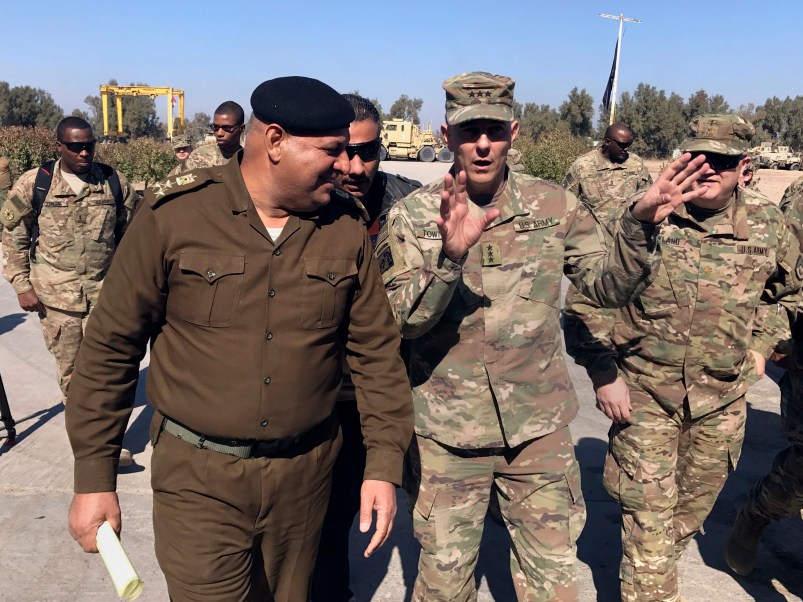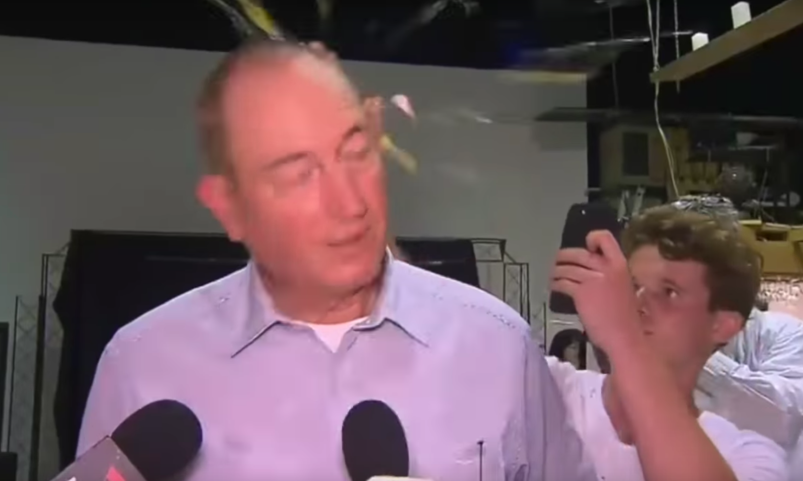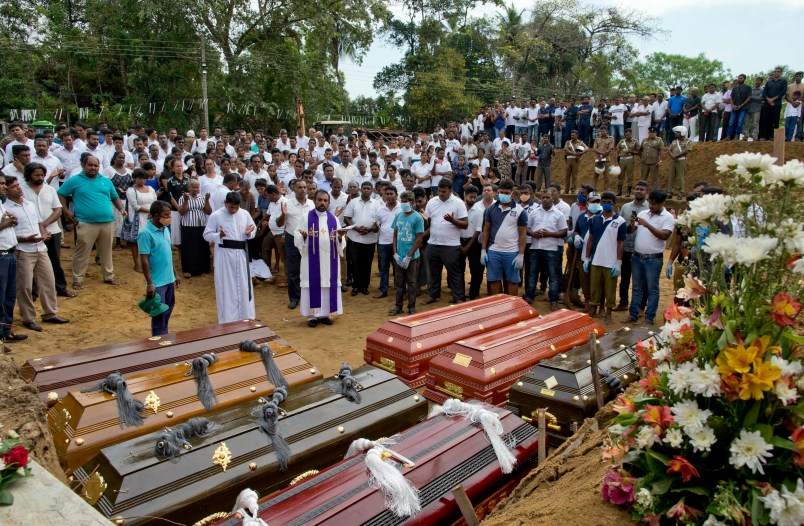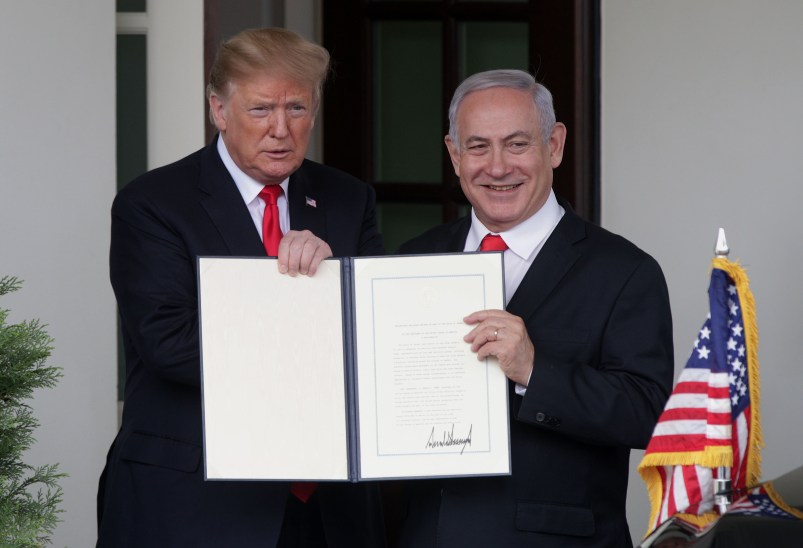WASHINGTON (AP) — A Russian airstrike in northern Syria hit U.S.-backed Syrian Arab forces who are part of the fight against the Islamic State group, a senior U.S. general said Wednesday.
Army Lt. Gen. Stephen Townsend, commander of the U.S.-led coalition forces in Iraq and Syria, said an unspecified number of American military advisers were a few miles away, out of immediate danger but close enough to see their Syrian partners get hit. He declined to say how many of the U.S.-backed Syrian fighters were killed or wounded.
Townsend said the Americans sent word that quickly reached Russian officials, who acknowledged the problem and stopped the bombing. Townsend, who spoke to reporters at the Pentagon from his headquarters in Baghdad, said he believes the Russians thought they were striking Islamic State positions in the village. But IS fighters had withdrawn before the bombing, and members of what the Americans call the Syrian Arab Coalition had moved in, he said.
The incident happened southeast of the city of al-Bab, which Townsend said has been fully “liberated” by Turkish forces.
Townsend mentioned the incident to illustrate his point that the battlefield in Syria is exceptionally complex. He expressed worry that the complexities could lead to more severe miscalculations and undercut an anti-IS military campaign that is approaching a crucial juncture as U.S.-backed Syrian Arab and Kurdish fighters close in on Raqqa, the self-declared IS capital.
Townsend said the U.S. is still talking to Turkey about whether and how Turkish forces might be involved in an assault on Raqqa. The issue is a sticky one because the Turks are opposed to the U.S. relying on Syrian Kurdish fighters in and around Raqqa; the Turks consider the Kurdish force known as YPG to be terrorists and a threat to Turkey.
Russia’s military involvement is a further complication, from the U.S. point of view. It’s unclear whether President Donald Trump will seek military coordination with Russia in Syria; his predecessor deemed it inappropriate, arguing that the Russians were at cross purposes with the U.S. by acting to prop up the Syrian government.
Townsend did not comment on relations with Russian other than to mention that a U.S.-Russian military communications link set up during the Obama administration was used in response to the airstrikes that hit U.S. partner forces Tuesday. The link was established to “deconflict,” or avoid collisions between U.S. and Russian warplanes over Syria.
“We used that mechanism and it worked,” Townsend said.
More broadly, the general said he is satisfied that the U.S. counter-IS strategy as developed during the Obama years is working. He said he has forwarded up his chain of command a set of recommendations on possible adaptions of the strategy, but he would not discuss those. He suggested that no major changes were needed and explicitly stated that sending large numbers of U.S. troops, as Trump proposed during the presidential campaign, would not help.
“I don’t foresee us bringing in large numbers of coalition troops, mainly because what we’re doing is in fact working,” he said. “But in the event that we bring in any additional troops, we’ll work that with our local partners both here in Iraq and Syria to make sure that they understand the reasons why we’re doing that and to get their buy-in of that.”
Others have said the Trump administration might seek to accelerate the assault on Raqqa by putting additional U.S. trainers and advisers into Syria and possibly sending small numbers of conventional forces to operate long-range artillery.
Earlier this week, Defense Secretary Jim Mattis sent to the White House his outline of how the administration might change the counter-IS strategy, which relies heavily on airstrikes and has evolved since President Barack Obama reintroduced troops into Iraq in 2014 after IS fighters swept across the Syrian border and captured large portions of northern and western Iraq.
Townsend said U.S. intelligence estimates put the number of IS fighters in Iraq and Syria combined at 12,000 to 15,000. That is down from an estimate of 19,000 to 25,000 in February 2016 and 20,000 to 31,000 in 2014.
Copyright 2017 The Associated Press. All rights reserved. This material may not be published, broadcast, rewritten or redistributed.









